Late March colour in the Garden
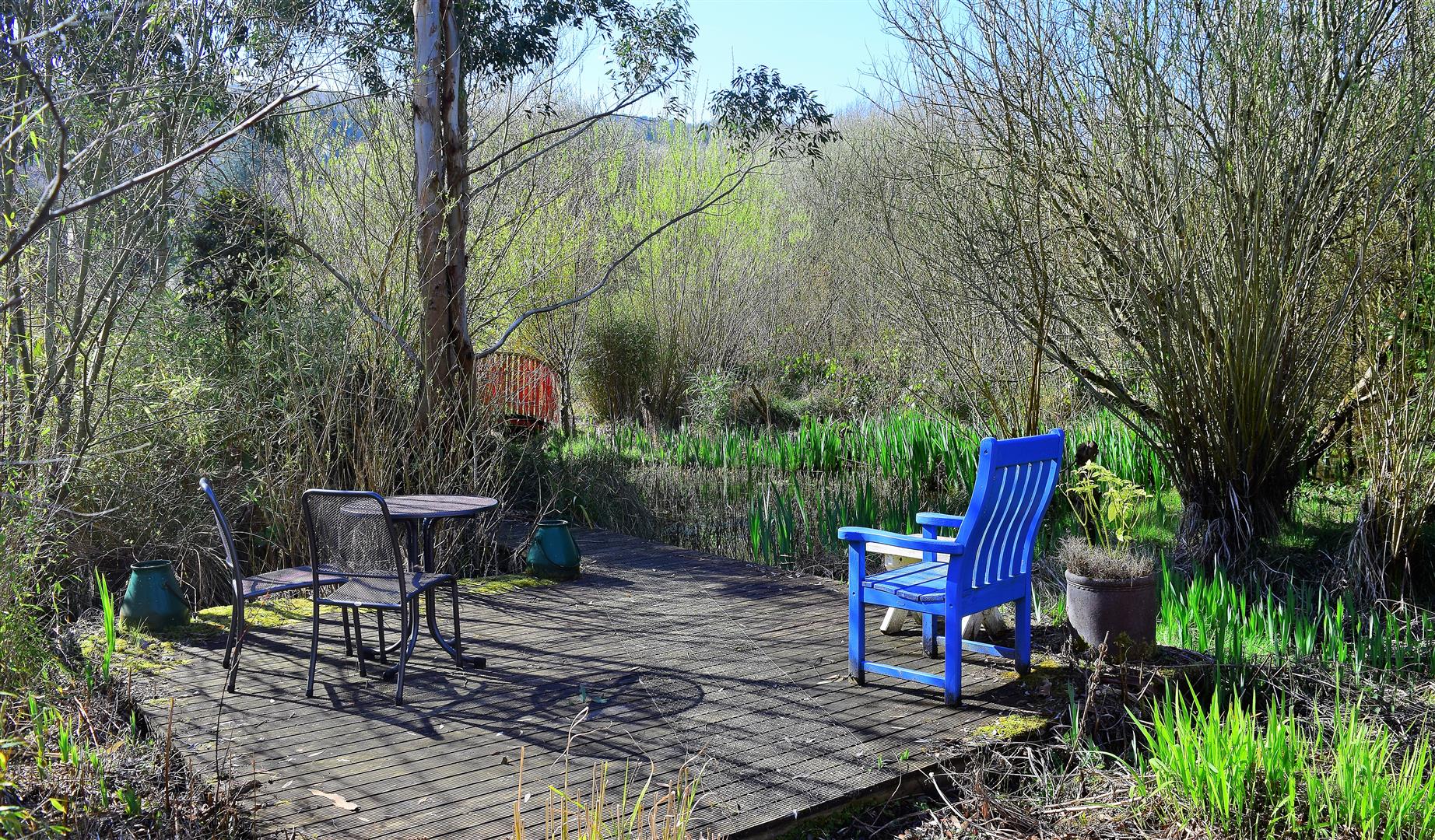
The Water Garden , March 27th 2017
For the past few weeks the newspapers and magazines have been full of advice for gardeners , that is either for the beginner gardener or the majority of non jihadist type gardener who never sets foot in the garden from November to March and it really is a growth industry for journalists and writers who generally dust off their files and trot out the same old rubbish each year at this time .
I have great faith in the UK Telegraph writers who are excellent and don’t talk down to the reader unlike the 20 something wannabe garden writers and don’t bang on about how to dress up a three metre outside concrete porch which already has two wheelie bins to accommodate and where they try to convince you will look like Kew Gardens after their make over . This year I saw an increase in articles about how to look after house plants and this reflects the reality that most city / town dwellers don’t have an outside space . I gave up growing house plants thirty years ago as I got fed up with overflowing water onto the carpet , dusty looking plants and plain awful looking yucca and fig specimens and generally the only house plant I would consider now is the old fashioned spider plant as it can be put outside for the summer … I found looking after house plants to be very time consuming and pretty hit and miss as to their survival as modern central heating is not great for them and they need apart from watering and feeding , regular misting to replicate conditions in their normal tropical environment .
One new gardening writer this year was Alice Vincent with her book “ How to grow stuff ” and if the article I read titled “ Confesions of a rookie gardener ” is anything to go on it is a heap of pretentious tosh but of course Alice , like the current crop of budding food writers with diets on how to be stick thin but looks good , proper posh tottie from Chelsea which apparently is necessary these days on the cover photo to sell books . One of her chapters is titled don’t be disheartened if it doesen’t turn out right … disheartened ? … thanks for the concern Alice but I am generally hopping mad as it is usually my own stupidity in planting it in water logged or windy locations with no shelter .
Basically the new gardener should have a walk up and down the road and copy what is growing well for the neighbours and go with that until you pick up enough info to be a bit more adventurous … sorry but for me Ms. Vincent is just one of the many wannabes trying desperately to find a commercial niche , peddling herself as an alternative to the professional garden writers such as Monty Don, Dan Pearson , Stephen Lacey or Helen Dillon .
One new phrase I picked up came from a with it new garden designer again trying to make a name was the Japanese concept of “ wabi sabi ” which is the acceptance of transience and imperfection in the garden and an example of this would be the Japanese love of algae growing on garden pots and sculpture which can take years . I remember a few years ago as a birthday treat taking Snezana to the National Japanese Garden in Kildare and like me she wasen’t taken with it’s fussy over stylized design all squeezed into a far too small area and by the end of the tour she was anxious to escape to the far more attractive products in the nearby Kildare Village shopping outlet but on the way out I got very enthusiatic about a huge very beautiful 100 year old Japanese pot which had a fabulous aged patina of algae but with the Louis Vouiton shop calling she said loudly she would scrub this clean with a few bottles of Cillit Bang … just at this moment we were passed by a group of visiting buddhist monks several of whom almost collapsed sobbing with the shock and even after nine years I can still see the tears in their eyes !!
Japanese gardening is very formal and rigidly traditional where sand and stone is used to mimic nature and even the way sand in the design is raked to a certain pattern is deeply symbolic and it is on my bucket list to visit Japan and see first hand the great gardens of Kyoto . Personally I feel you need to be Japanese to fully appreciate their garden style or if a westerner to be immersed in buddhism but for me their garden ornaments which are wonderful are the only elements that can be incorporated in western gardens .
Last year we visited the Japanese garden in Powerscourt and much preferred it’s less formal traditional layout and it fitted better into the landscape laid out in a deep hollow on the Powerscourt estate and we have a few Japanese influences in the garden here and would have more except it is difficult to source the ornaments and pots in Ireland and the examples you do see are fairly cheap and tacky looking .
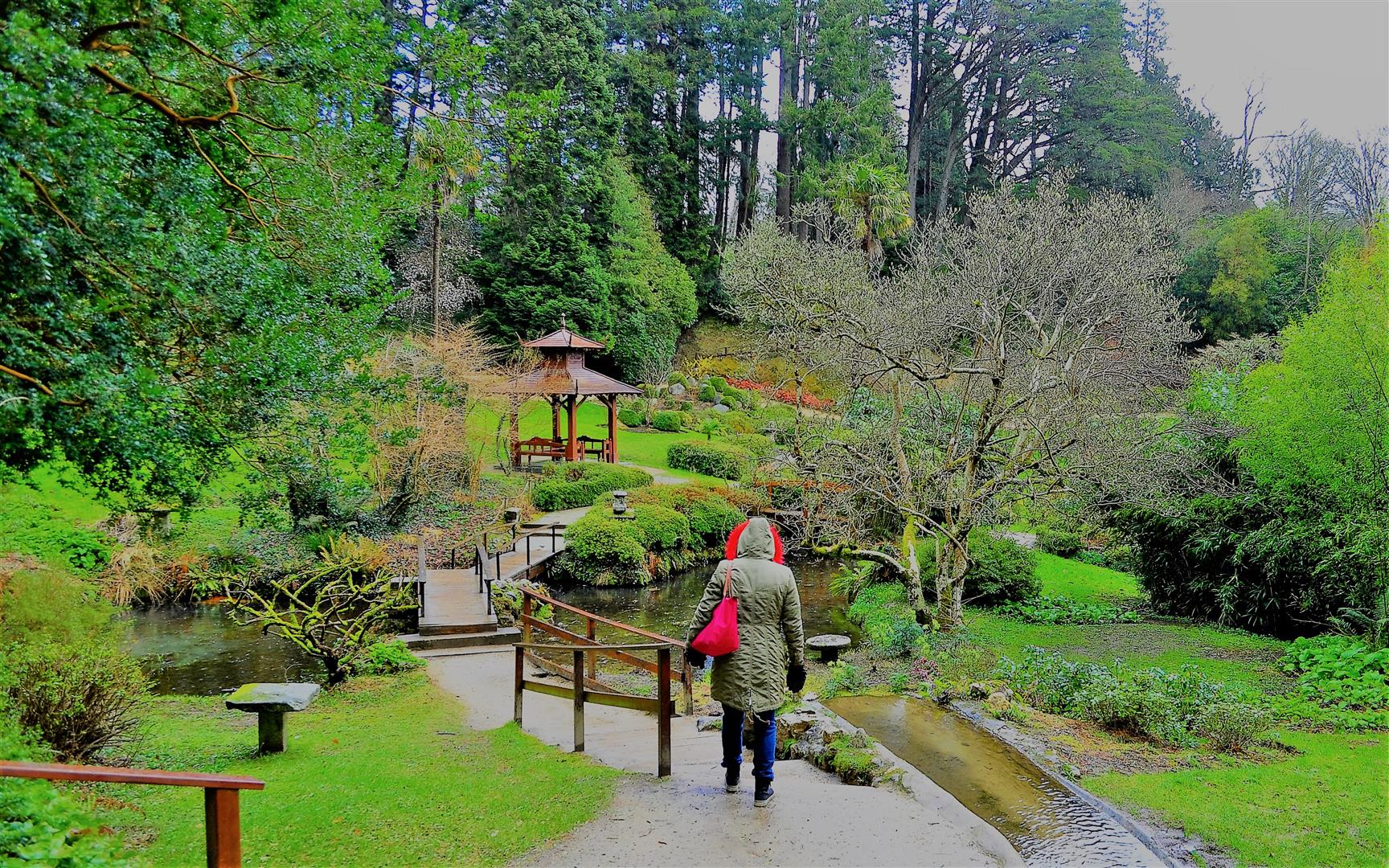
Visit to Powerscourt Japanese Garden February 2016
Japanese containers in the front garden here
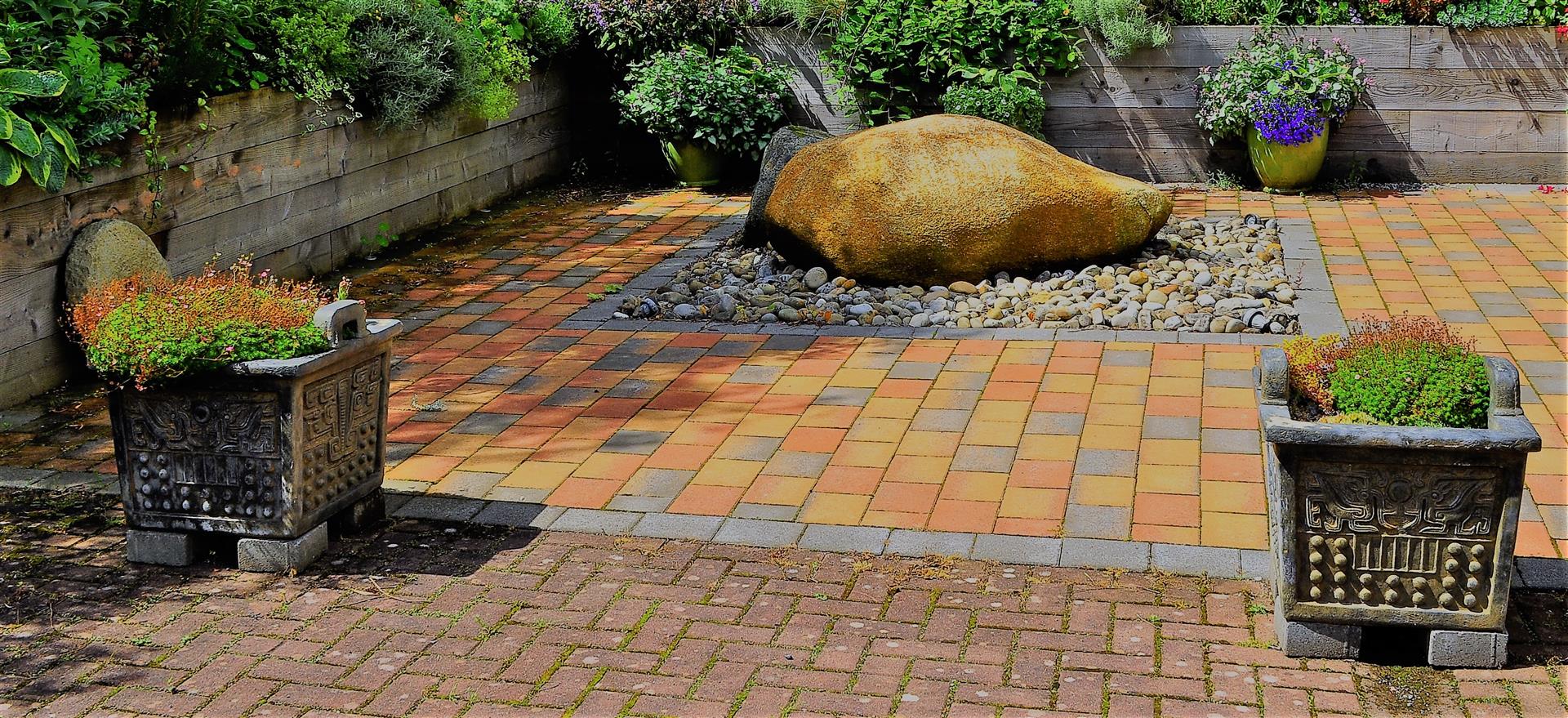
Front Garden July 2015
Keeping with the Japanese theme I bought two cryptomeria conifers a week ago for the immediate back garden and this conifer is the national tree of Japan , called sugi and there are several varieties from dwarf size for gravel gardens and bonsai growing to tall cedar specimens … this type is called elegans and is a slowing medium height shrub / tree , two metres tall , evergreen and spreading and I have one growing for the past ten years in the Lower woodland Garden which I really love for its informal shape and soft downey leaves that give all year round interest and I get a lift everytime I see it but as you can see from the photo it is slow growing .

Cryptomeria in the Lower Garden February 2017
I seem to be stuck in a Japanese groove here as my favourite perennial plants are just showing above the ground … hostas … and of course out come the slug pellets as there are armies of slugs queuing up to eat the emerging leaves and ruining the plants . James Wong in his gardening column in the Observer last week wrote that in their native Japan the hosta is grown mainly in the vegetable patch as the young rolled up leaves can be cooked like asparagus and are delicious fried … heresy for me though to eat such a gorgeous plant as there is nothing as lovely as the large grey leafed hosta sieboldiana elegans . Hostas need looking after though , plenty of water ( I water and feed mine every day during June / July ) , shade during a good part of the day and vigilant protection from the ever present slugs , I douse mine with slugtox when the leaves first show above the ground and regularly inspect and renew the pellets after rain for the first six weeks as the slugs seem to prefer the young leaves and generally leave the fully expanded mature leaves alone although hostas grown en masse seem to be less attacked .
In a few weeks time the garden centres will be full of hostas but a word of warning these plants are likely to have been imported from Holland and grown under glass to force them into early full leaf and rarely do well after planting out as they are too tender from six months in a green house (although they will recover and be fine next year ) and I prefer to buy from last year’ stock which has overwintered outside … if you can find such plants . I always buy a supply of hostas from Sweeny’s Garden Centre in New Ross which is an old school garden centre as he mainly grows his own stock and splits up established plants each October , leaves them outside and sells them on in March / April and this week I bought some grey leafed sieboldiana elegans and a variety called aureomarginata which has a nice white variegated leaf and clumps up nicely for a good show .
For years I have been looking to buy a staddle stone … stone mushrooms as people call them … they date from the medieval period in England where they were used to support grain stores off the ground as protection from rats and the word staddle is from the Old English “ stathol ” which means foundation . You won’t get an original nowadays and generally they will be from the early 1800’s . I first saw them and fell in love with staddle stones when I used to tour England by bike in the 1980’s and visit the major English gardens like Sissinghurst and Hidcote Manor and the staddle stone always has a place in English National Trust gardens . Two featured last year in auctions but I was away for both sales where each stone fetched 900 euros … a massive price by any standard but last week another stone was at auction and I went to see it as beforehand the auctioneer told me this one was even better than the previous two however I was disappointed to see that the stone was a fake concrete one made in a mould and probably only 20 years old so I didn’t follow up … some day though my staddle stone is waiting !

Staddle stones 15th century
I saw my first staddle stone in the flesh as it were when I was cycling up the Meon Vally from Portsmouth having come off the ferry from a trip around the Isle of Wight in September 1981 , I was visiting the grave of Guy Burgess , one of the original Cambridge spies from 1951 as after his death in Moscow he was buried in his Mother’s grave in the churchyard of West Meon village … as a kid I had grown up in the 1950’s with a Father who was staunchly communist and in whose book case was a book “ Burgess and Maclean ” and through this book I became fascinated by the whole Kim Philby , Burgess , Donald Maclean , Anthony Blunt era where aristocratic English men turned against their elite class and betrayed secrets to the Soviet Union for ideological reasons .
It was latish when I arrived at the graveyard in Meon and although I found the mother’s grave there was no mention of Guy so I went in to the village pub to enquire and was told that Guy Burgess was indeed buried there but due to the notoriety he was not listed on the grave stone as they worried about it being defaced etc. however if I went back and pulled back the grass I would find his name chiselled along the edge of the kerb around the grave … and there it was when I went back .
While there it was now dark and I need to find a place to stay and by chance met a local woman coming out of the grave yard with my bike … we got chatting about the Burgess family and she ended up inviting me to stay the night with her family … who lived in a 15th century medieval manor house with a beautiful garden and where showing me around the next morning I saw my first staddle stone .
Fast forward fifteen years later and I am working in January 1996 with the IGFY Mission implementing international arms sanctions against the Milosovic regime along the Montenegro border with Bosnia and my professional partner is a Russian Intelligence Officer , Valary Ivanov … Valary and I would be based for up to three days at a time in a wooden cabin in the Montenegro mountains , on our own and living on what we brought in with us in the mission vehicle which would then leave and come back for us in 48 hours time … snowed in for most of the time we had a lot of time on our hands so reading was a biggie and Valary loved going through the five or six books I brought each time with English history especially Winston Churchill his favourites … on one trip I brought the latest book on the Cambridge spies called “The fifth spy ” and which I thought Valary would love but he just glanced at and went on for the next book and I said Valary I thought you would love that … nah he says I have read all the files !!!
At the end of our mission we were awarded medals in Belgrade by a Finnish General , the Head of Mission and at the ceremony I was walking back to my seat , chuffed at my only medal since my first Holy Communion medal at St. Mary’s School as a seven year old and kept taking a peek at it in it’s shiny presentation box when I saw Valary coming behind me and he popping his medal into his coat without a glance … not delighted then Valary … nah just another medal … now I knew he had served as a Russian consular officer in Athens and in the military in the Russian occupation of Afghanistan in the 1980’s … so how medals have you Valary … 37 he says … which put the IGFY medal in perspective boom boom !!
Montenegro at that time in 1995 during the Bosnian war was a dangerous place for an international observer as the locals hated us for implementing sanctions against their neighbouring serbs who only three years previously were all part of a single Yugoslavia and Niksic where we were based was a very very dangerous town to be in and we were not allowed out of the base HQ on our own as stone throwing at mission members was a local past time for local youths … and the hotel we were billeted in , the Onogast , had separate tables in the restaurant for mission members while local staff , interpreters and drivers ate separately … all the easier to poison us was a popular suspicion with us and we always referred to the hotel as the Holocaust !
An extract from my diary of January 1996 gives a flavour of a Balkan frontier town during sanctions
Sun. 07/01/96 Nicsic
My first feelings are what have I left myself in for ?! Niksic sounds like a BAD town and this is before you hear all the firing of AK47’s, pistols, shotguns etc. as the locals celebrate Orthodox Christmas and New Year. Apparently two occupations which are highly respected around these parts are smuggling and being a warrior — and the two fit like a glove here which can make it dangerous for Customs Officers ! Veteran staff here are telling me all sorts of horror stories which I never heard in Belgrade, shots being fired at the caravan during the night ( entire wall raked by automatic fire ), threatened with pistols by drunken Police ( observer had a gun held to his head but as it was badly cocked, the pistol did not go off ). As I write it is Christmas night, and the guns are constantly firing outside, perhaps I am being like a nervous American !
Niksic is a highly dangerous town, everybody carries a gun and likes to shoot it in the air frequently ( they have also been known to take the odd pot at our border cabins ). it is an every night occurrence to hear prolonged shooting in the street so you do not go out except in groups of 100 ! A wedding party passed me yesterday , every car had a gun poked out the window shooting in the air, as I huddled in a doorway I wished the happy couple a long life which might be as much as five years around here. We work EVERY day here and after 30 days ,can take five days leave which you presumably spend visiting a therapist ! On the plus side, the scenery around Montenegro is stunning and the work is very interesting —- they take the smuggling of even a 20 litre can of fuel very seriously, our American colleagues are all ex- military , most are special forces background so paranoia is pretty big, a tour of Lajone or good old Sopot road in Macedonia where fuel smuggling to Sebia was condoned actively by the authorities would induce mass hysteria with the staff here !
Since the war I have been back to Montenegro on an almost yearly basis … I even have a Montenegrin son in law , Igor , and the country has changed in the twenty years since I worked there … Niksic is a modern bustling town and I even had a coffee in the Onogast Hotel four years ago without a drop of pee or worse added … but one would never call any Balkan country safe by EU standards and an undercurrent of violence is always present .
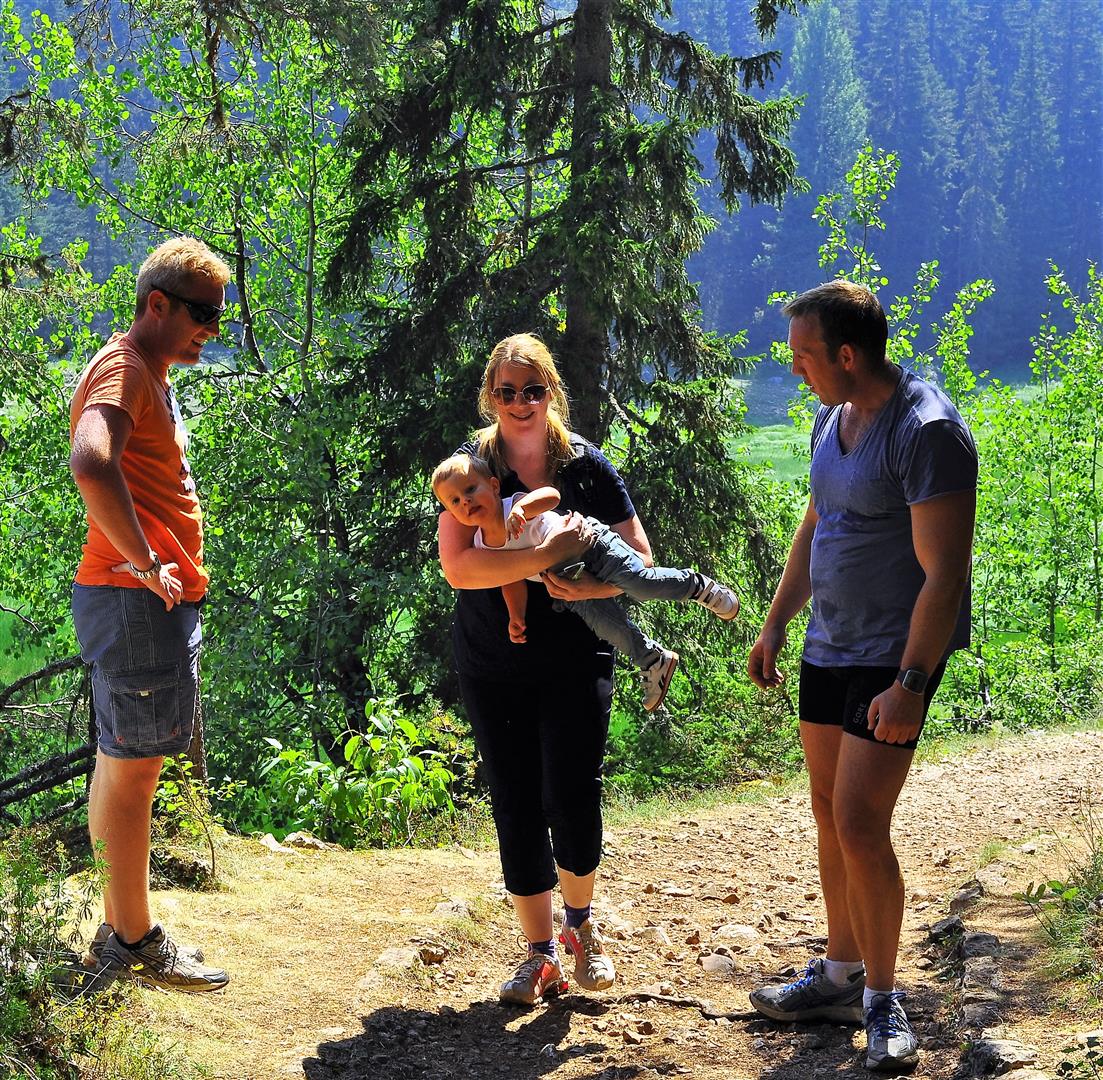
Diarm , Claire with my grandson , Marko , Kev in O’Riordan in Zjablak , Montenegro , September 2012
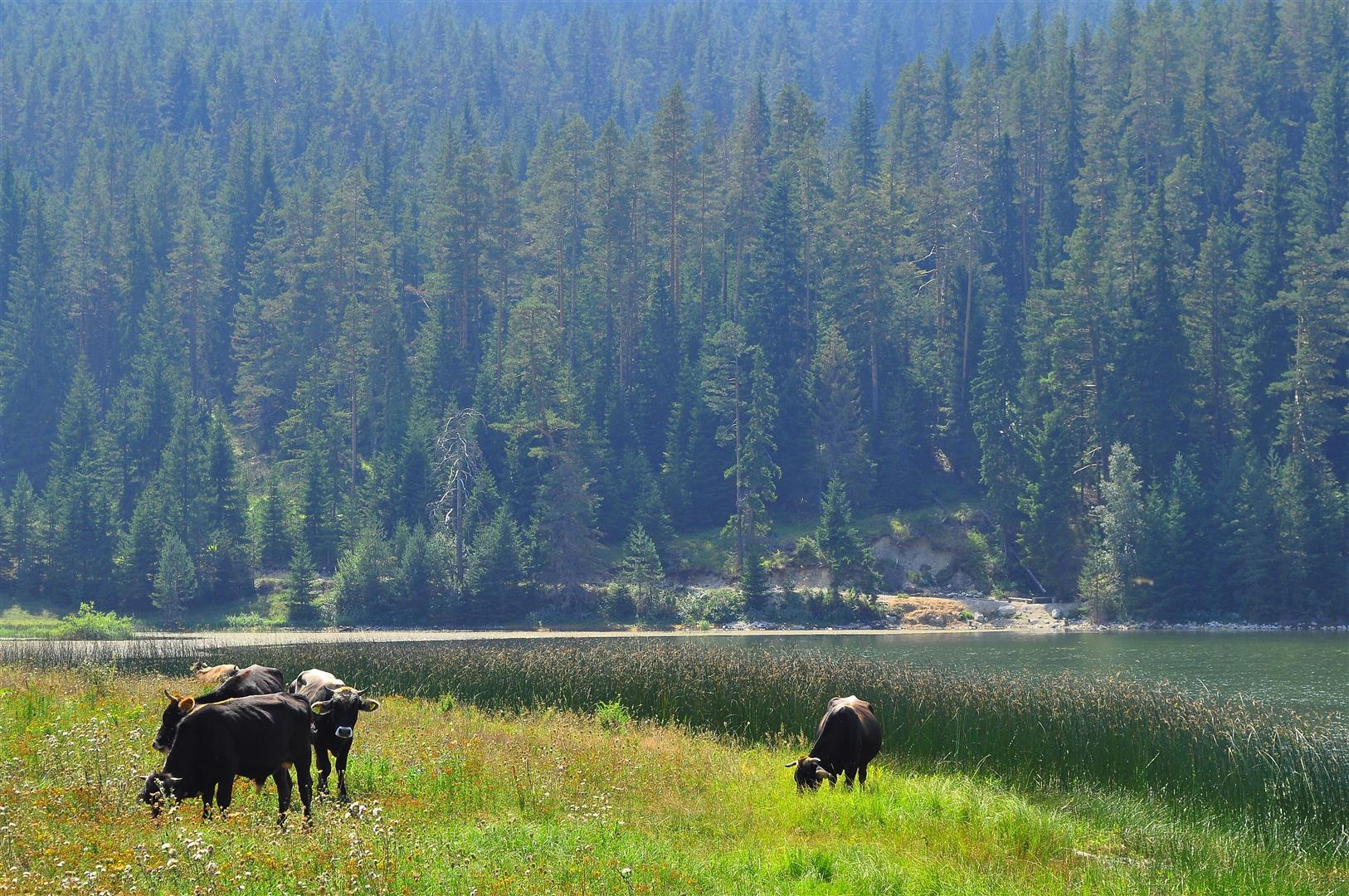
The Black Lake , Zjablak , Montenegro September 2012
What has never changed is the absolutely beautiful scenery in Montenegro nor the typical Balkan hospitality of the local people … provided you are not an international observer !
One of my favourite early Spring plants is the marsh marigold , caltha palustris , which is a marginal plant for waterside locations meaning it can be grown in about three / four inches of water along the edge of a stream or pond which is where we grow it here in the Water Garden although it will also do well in boggy areas . You can divide it at any time of the year , by lifting the entire plant and then teasing out the roots and I do this each year and just plant them straight back into where you want them to grow with 100% success , an easy plant which will grow in sun or shade although it shows off it’s yellow flowers better in sun and it looks good all year round with glossy green leaves in mounded clumps when not in flower , a no brainer of a plant that should be in everyone’s garden .
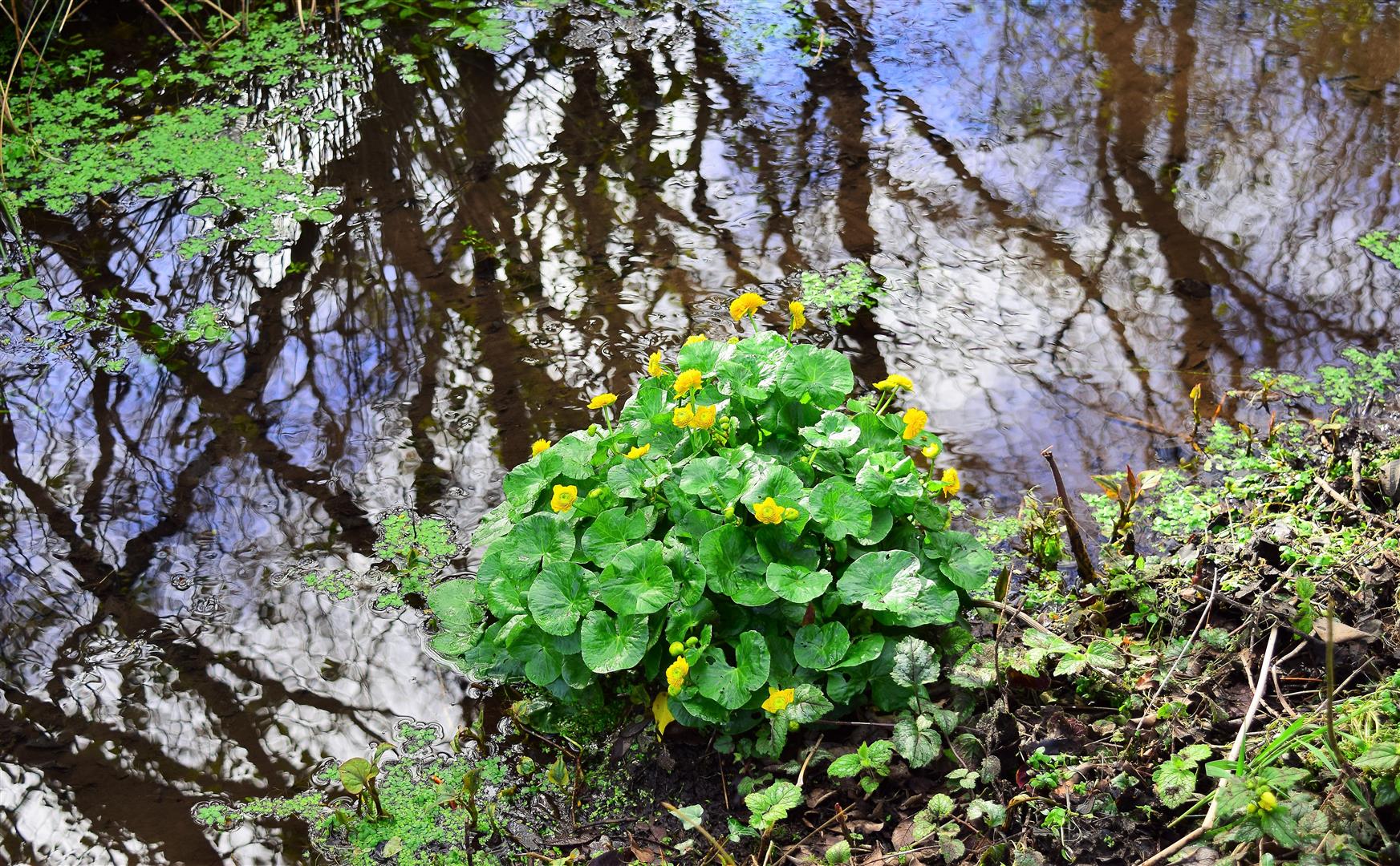
Caltha , the marsh marigold , lower stream area , March 10th 2017
The commercial caltha does not self seed but there is a wild version which spreads throughout natural water and we are luckly enough to have this in the swamp areas , it is a bit leggy compared to the commercial clumps but still very beautiful .
Another favourite waterside plant at this time of year is americanus lysichiton more commonly known as the American skunk cabbage and this owes it’s name to a rather nasty smell but a beautiful flower is followed by huge paddle like leaves and it is a terrific foliage plant which again is a marginal water plant although my experience is that it grows best in swampy conditions and not submerged in water . Originally from North America where it is considered an invasive weed that bears eat when they come out of hibernation ( as a laxative apparently ) … it was imported to the UK in 1901 and quickly became a cult plant and was awarded the RHS Award of Merit , difficult to source here in garden centres as it flowers for a brief period of about seven days and people nowadays only buy plants in flower so the garden centres don’t stock it .
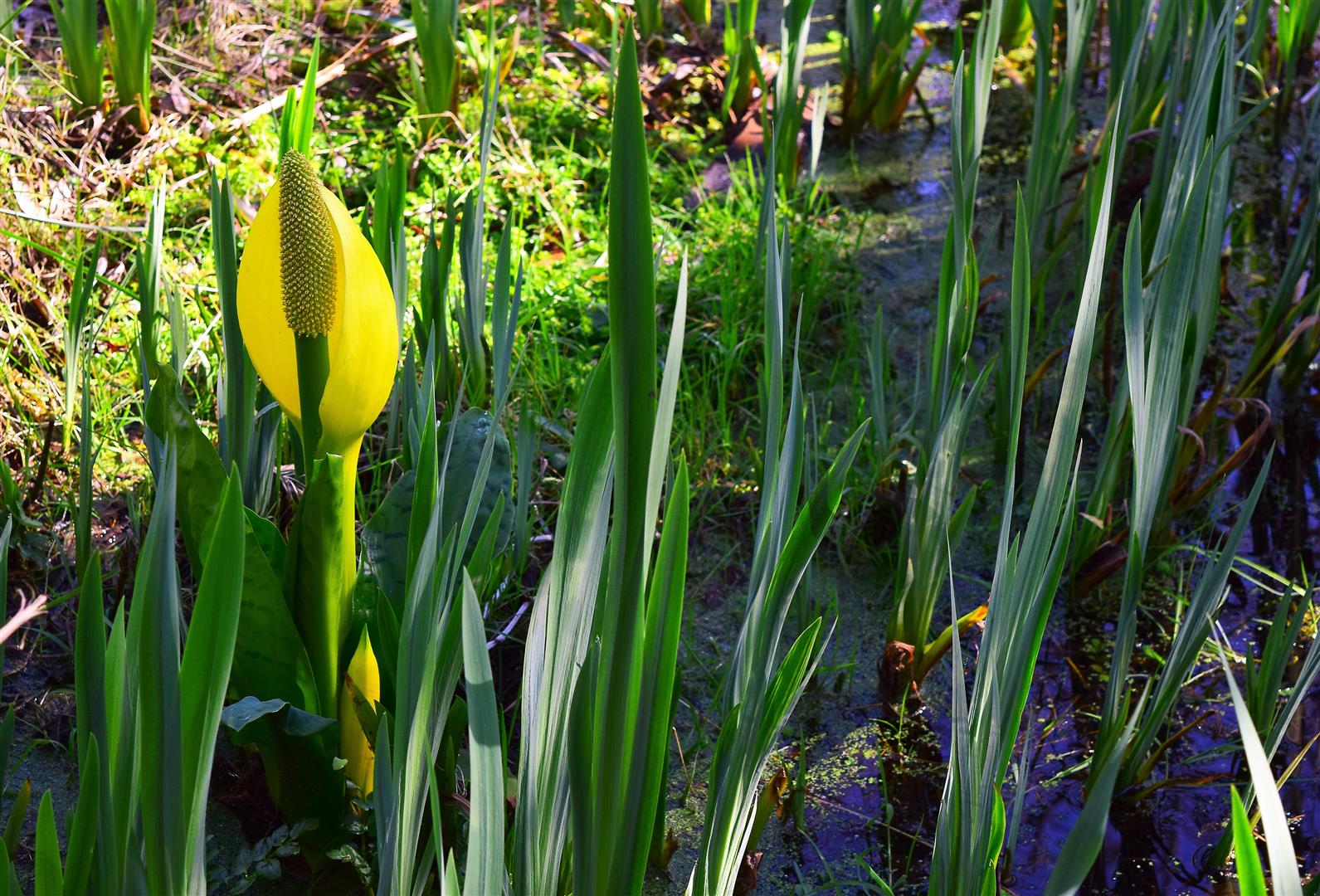
American skunk cabbage in the Water Garden , March 17th 2017
Last year in February 2016 I built five raised beds using the dry stone walling technique with stone salvaged from a historic building in Clonmel and planted them up with a mixture of perennial plants that would give all year round structure and colour and underplanted with miniature daffodils , variety tete a tete for spring colour and a year on here are some photos from yesterday of how they have grown together .
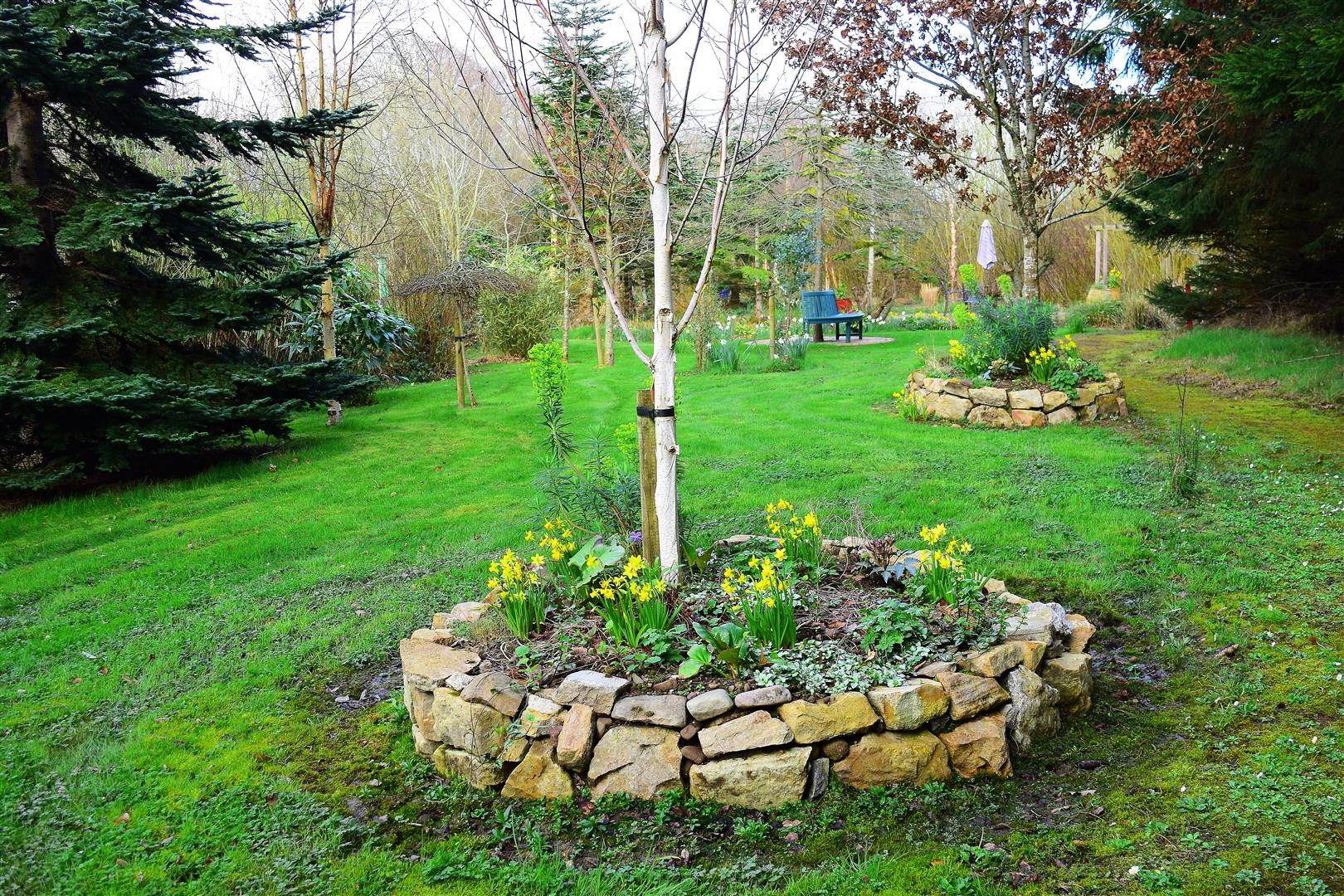
Lower Garden , March 28th 2017

March 28th Lower Wood
The Lower Wood in late Spring
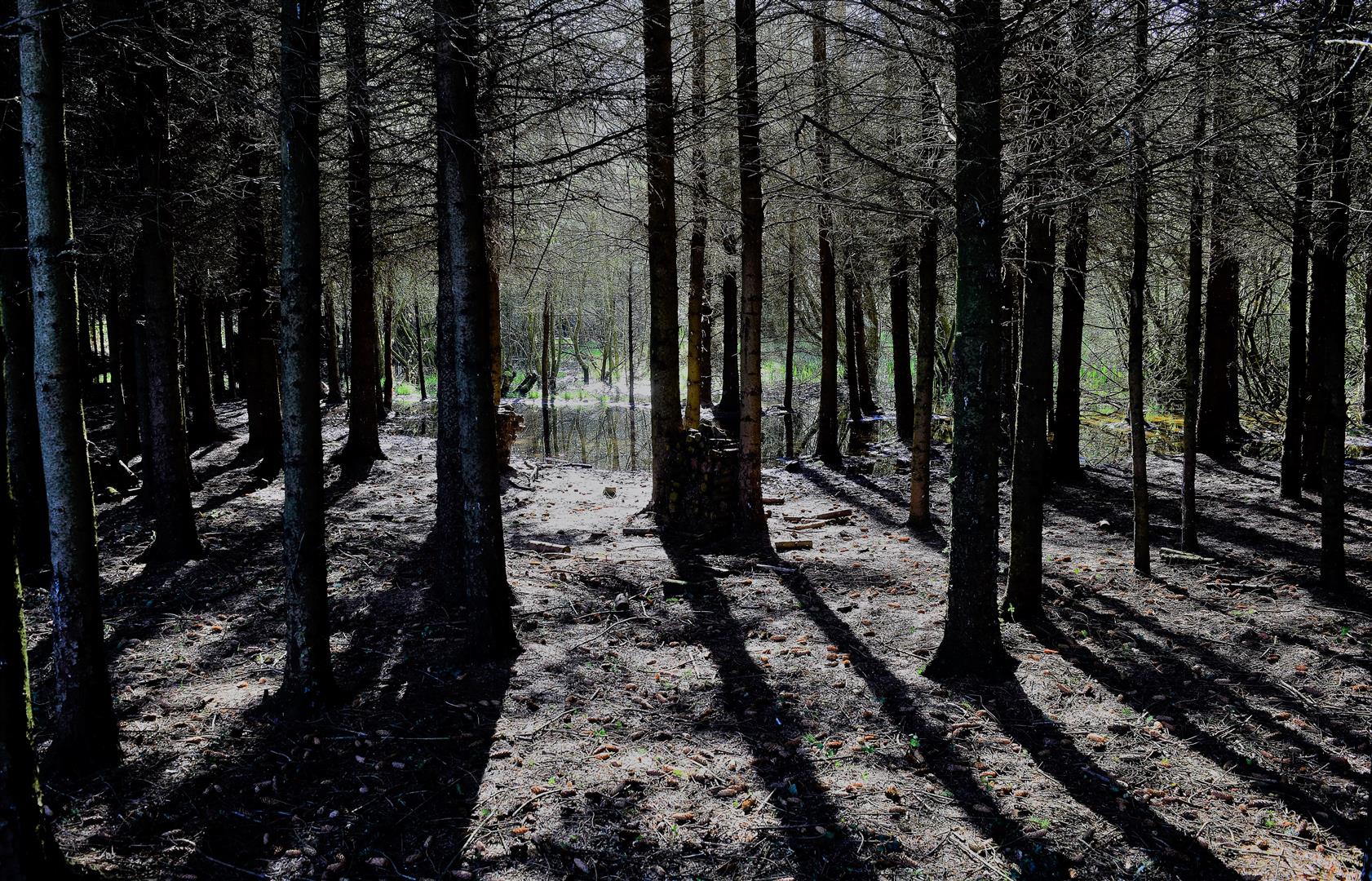
The Lower Wood March 27th 2017
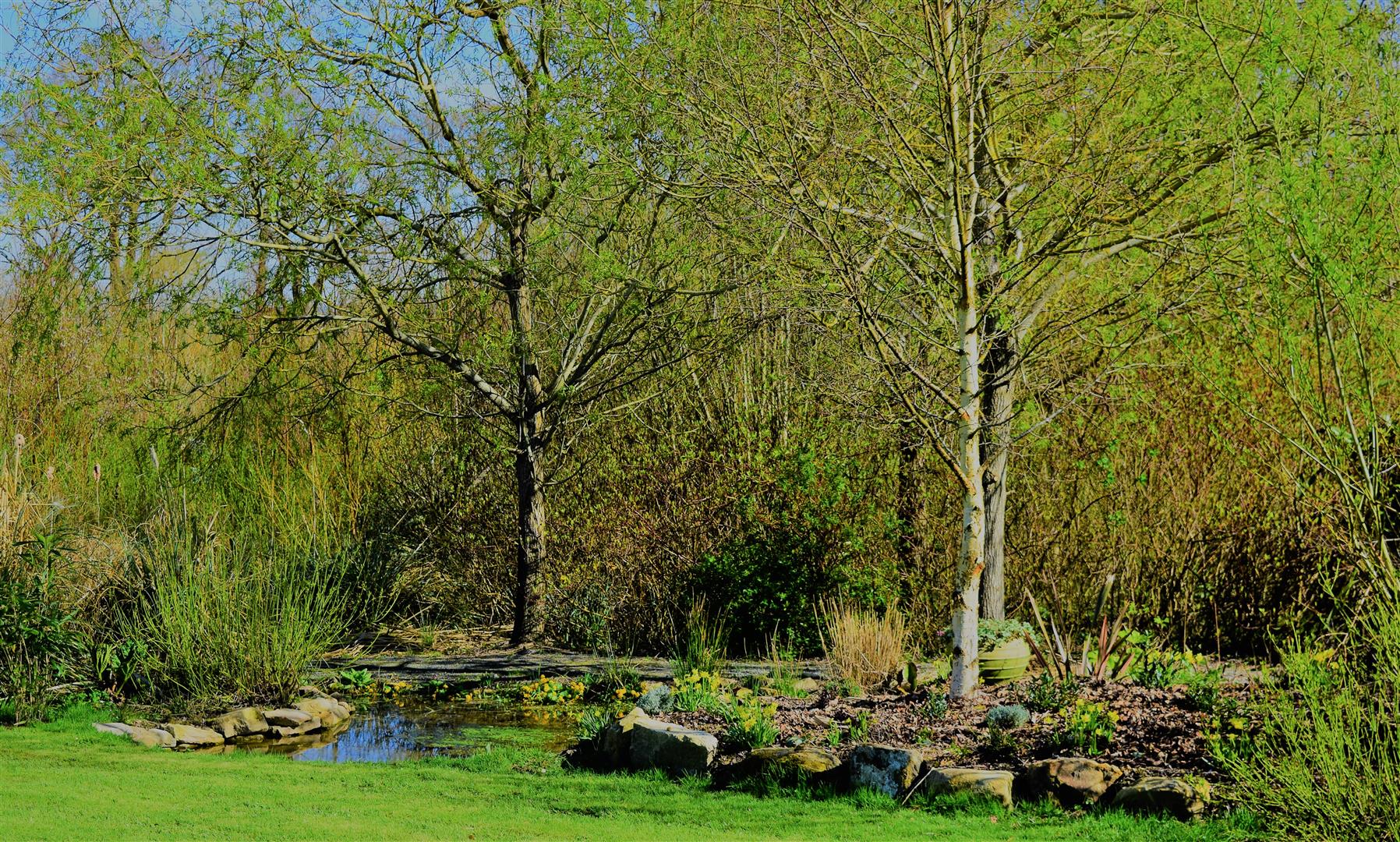
The Top Garden , March 27th 2017


Leave a Reply